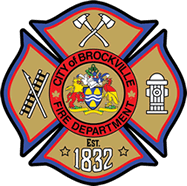Carbon Monoxide Alarms
CARBON MONOXIDE
Carbon Monoxide (CO) is known as the “Silent Killer” because you can’t smell it, see it or taste it.
CO is a gas created when fuels such as kerosene, gasoline, wood, coal, natural gas, propane, oil, and methane don’t burn properly. Vehicles or generators running in an attached garage can produce dangerous levels of carbon monoxide which can be deadly.
CO enters your body as your breathe. CO poisoning can be confused with the flu, food poisoning, and other illnesses. Symptoms include headache, nausea, dizziness, light-headedness, and shortness of breath.
CARBON MONOXIDE ALARMS
There are different types of alarms with different features, so choosing the right one can be confusing. Take comfort in knowing that while alarms might look different and/or have different features, they are all tested to the same standard. Make sure that the alarm you are purchasing is CSA-6.19 Residential Carbon Monoxide Alarming Devices or UL 2034 Single and Multiple Station Carbon Monoxide alarms. Features to consider:
- Power Source
CO alarms can be electrically powered, battery-powered, electrical plugin or a combination. If you are installing a plugin type or electrically wired alarm, a battery backup is recommended in case of power failures. - Digital Display
A digital display shows the parts per million (PPM) of CO that is in your home. Alarms aren’t activated unless levels reach 70 PPM, however a digital readout gives you an opportunity to have fuel-fired equipment inspected and repaired prior to an emergency occurring.
WHERE TO INSTALL CARBON MONOXIDE ALARMS
HOUSES
Unlike smoke, CO mixes freely with the air, so your CO alarm doesn’t have to go on the ceiling or up high. It does need to be near the area where you sleep so that it is loud enough to wake you up and get you into action. If your home has a fuel-burning appliance or an attached garage, install a carbon monoxide alarm adjacent to each sleeping area. Read the manufacturer’s instructions carefully and follow them exactly.
BUILDINGS
If you live in an apartment or condo building and there is a fuel-burning appliance inside your unit, install a carbon monoxide alarm adjacent to your sleeping area. Read the manufacturer’s instructions carefully and follow them exactly.
If the building has a service room with a fuel-burning appliance, CO alarms must be installed in the service room and adjacent to each sleeping area of all condos/apartment/units above, below and beside the service room.
If the building has a garage, CO alarms must be installed adjacent to each sleeping area of all condos/apartment/units above, below and beside the service room.
REPLACING YOUR CARBON MONOXIDE ALARM
Read the manufacturer’s instructions carefully and follow them exactly. Carbon monoxide alarms do not last forever. Check the expiry date on the alarm so that you know when to replace them. If you cannot find a date, replace the alarm.

